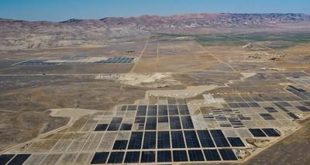The LA Times examines the effect of net metering in California on solar system installations. Net metering has been a big success in helping to give consumers a reason to install solar. IN fact until net metering came along (and leasing options) I was held up in limbo. I wanted to have solar on my house but could not find a way to make it work. But with net metering the equation started to work for me and many other California citizens. I think it would be a bad thing to remove or alter the net metering system.
That ray of light you see peeking through all the clouds darkening California’s future? That’s the sun. More specifically, solar power, in which California is the hands-down national leader.
The state’s installed solar generating capacity of about 1.2 gigawatts — the equivalent of two big conventional power plants and enough to fill the electrical demand from nearly 200,000 homes for a year — easily outstrips the next 10 highest-ranked states. It’s also the fastest-growing solar market in the country.
So you may not be surprised to learn that California’s big utilities are fighting like mad to keep a lid on that growth. The most important battle in that war is scheduled for this week, with California’s continued primacy as a solar state hanging in the balance. More than bragging rights are at stake: California’s solar industry has created 26,000 jobs, or 1 in 4 solar jobs nationwide, according to a recent study by the UC Berkeley law school. And California’s solar generation will have to keep growing if the state is to meet Gov. Jerry Brown’s goal of generating 12 gigawatts from clean sources such as solar, wind and fuel cells by 2020.
But one nagging question underlies the state’s success thus far: Have we spent too much to get here?
The question is raised by a battle over a practice known as net metering, which was established by a 1995 state law and went into effect a few years later. Think of it as the basis for your solar salesman’s claim that you can cut your electric bill big time by mounting solar panels on your roof.
Simply put, via net metering you get credit for the electricity your rooftop generates when your overall usage is low, say when you’re at work during the day, and you apply it to the bill for the power you use at night, when you’re home and the sun isn’t shining. You’re netting your rooftop generation against your nighttime usage and emerging with a lower bill.
The solar industry and renewable energy advocates say that although other incentive programs have been created by California and the federal government to encourage the spread of renewable energy, net metering is the most important driver of the explosive growth in residential solar. “That’s the foundation of the solar industry in California,” says Dan Sullivan, president of Sullivan Solar Power in San Diego, which expects to install $22 million worth of residential and industrial solar generating units this year. Indeed, net metering has been so successful in California that 42 other states have enacted similar rules.
source – read more
By Michael Hiltzik
Have you installed solar in California? Did net metering have an impact on your decision to get soalr energy? Comment below and tell your story.
 Alternative Energy HQ solar power for homes, wind energy, and bio fuel issues
Alternative Energy HQ solar power for homes, wind energy, and bio fuel issues






